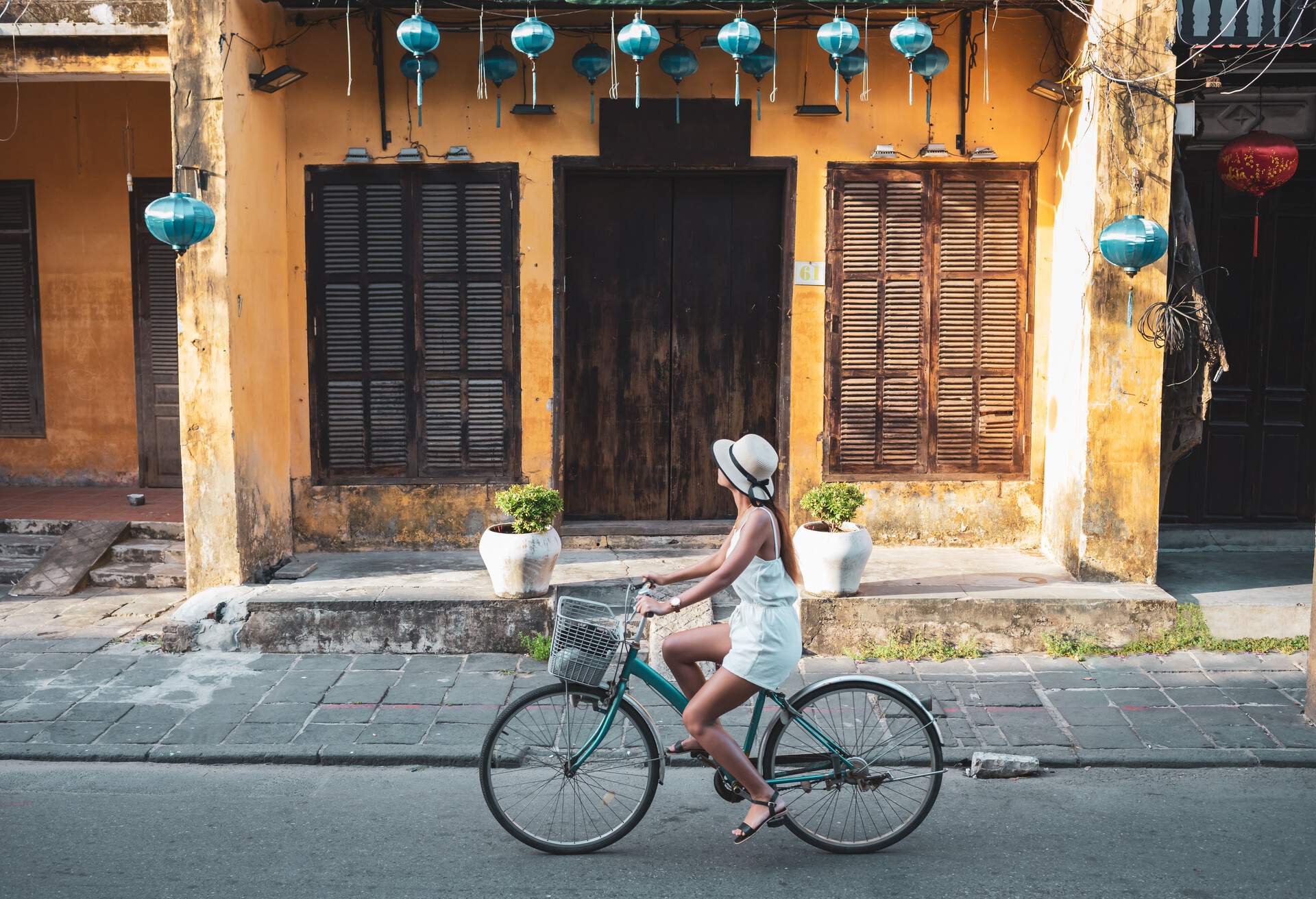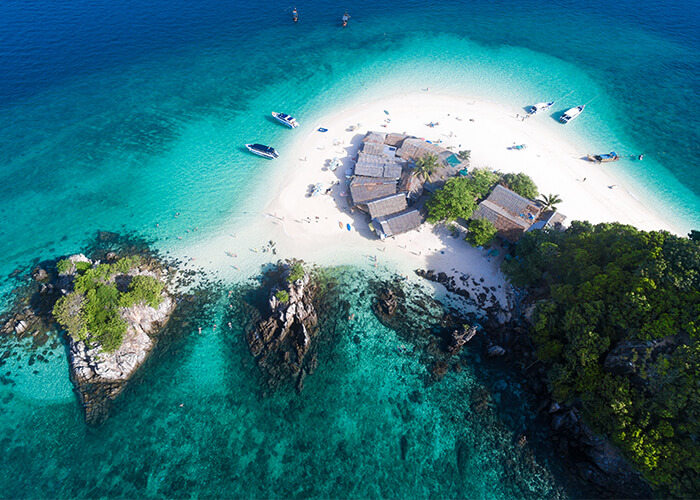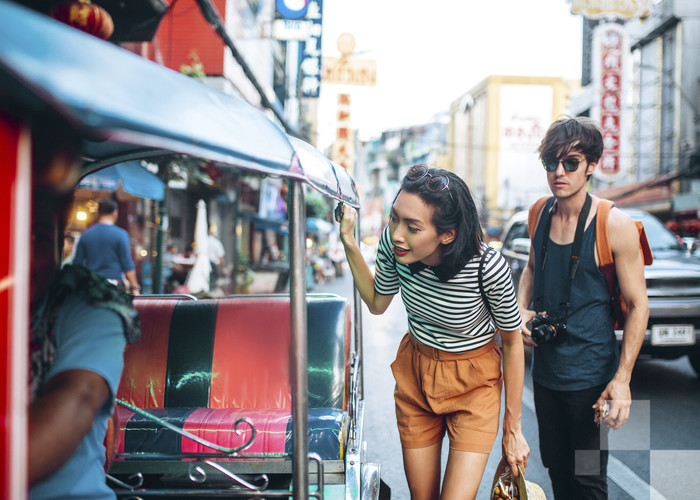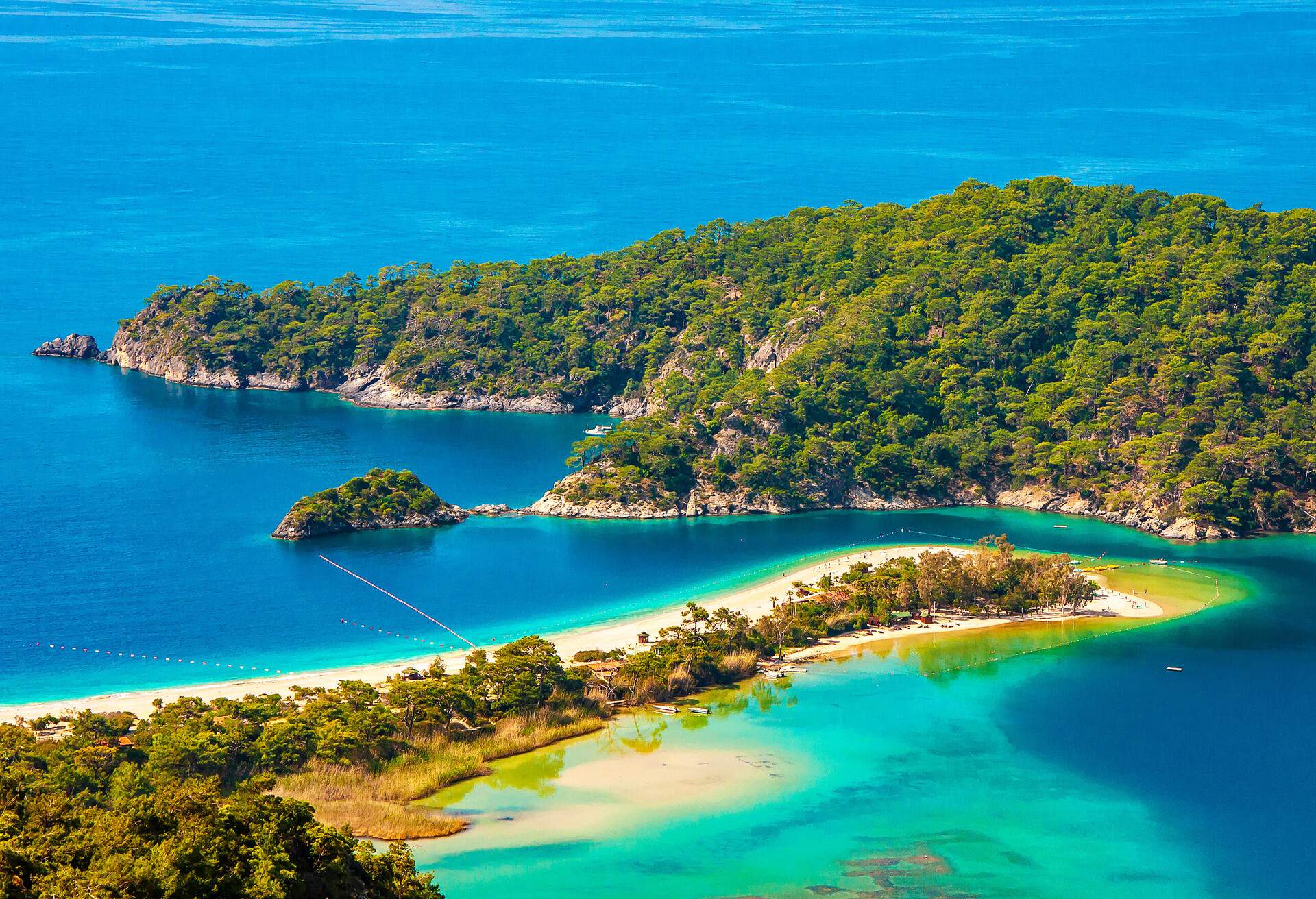If you’re wondering where to go in Vietnam, whether you’re seeking culture, nature, adventure, or relaxation, you can find it in our guide to the best places to visit in Vietnam. Discover bustling cityscapes in Hanoi or Ho Chi Minh City and stunning natural landscapes at Ba Be National Park or Phu Quoc. If you’re looking for historic sightseeing, Vietnam offers it in spades, with attractions like the fascinating abandoned temples of My Son.
You can also find sunny skies and sparkling waters at the beaches of Mui Ne and Halong Bay. Wherever you go and whatever you do in Vietnam, an unforgettable trip is right around the corner. If you’re planning an around-the-world trip or you’re just not quite sure what your next holiday destination should be, check out some of our other guides to destinations like Australia, Turkey, and Dubai.
Best places to visit in Vietnam: Northern Vietnam
Home to the country’s capital and stunning mountain landscapes, Northern Vietnam is one of the best holiday destinations in Vietnam. You can taste delicious street food in Hanoi and go scuba diving in Halong Bay. Don’t forget to pay a visit to the picturesque Sapa countryside and the scenic Ha Giang mountain passes.
Hanoi
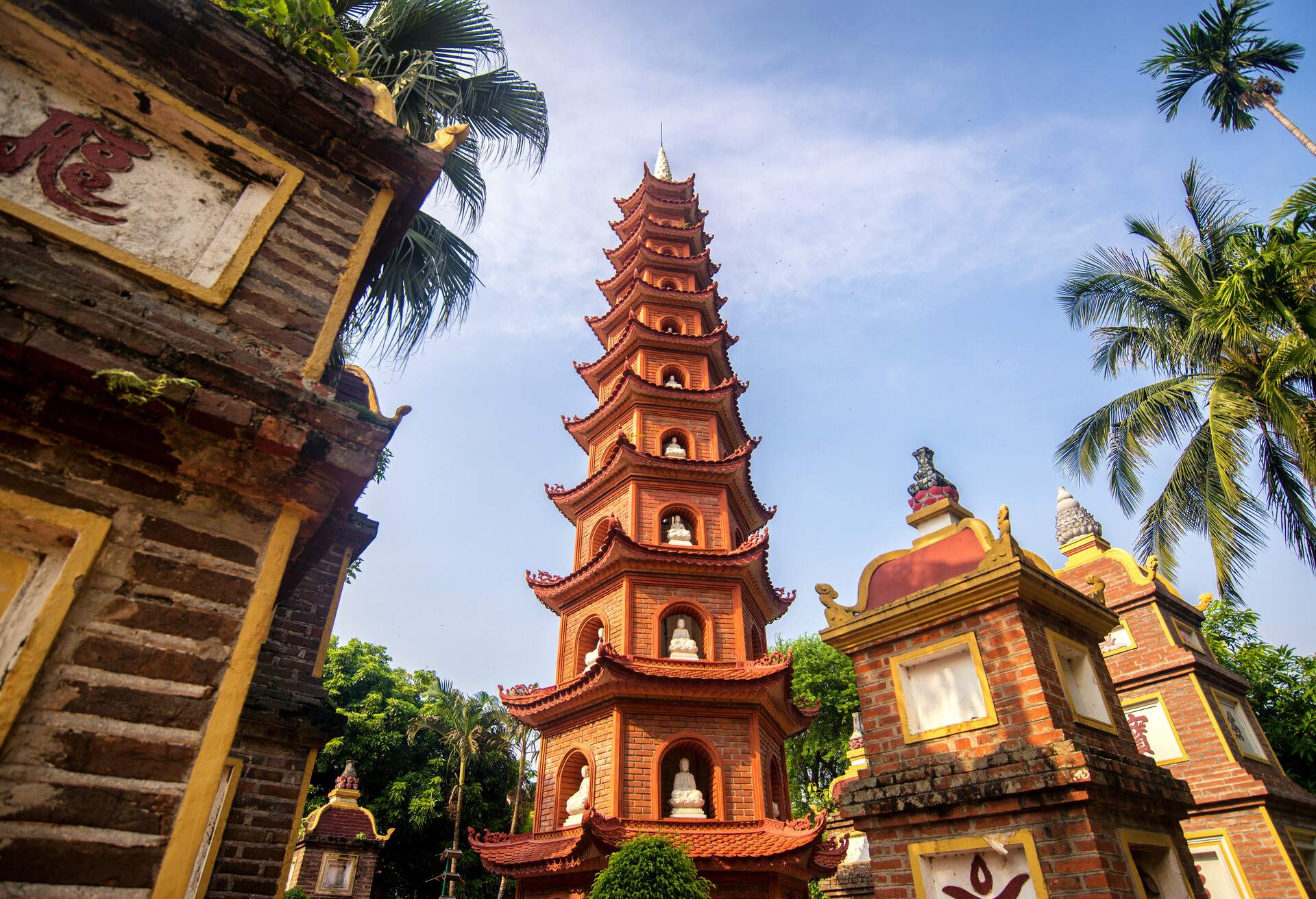
Vietnam’s capital, Hanoi, was founded over 1,000 years ago, and today it blends historical features with modern restaurants, art galleries, and more. Head to the Old Quarter to visit ancient temples and sample delicious street food served fresh. Art lovers will find plenty to do in Hanoi, with the Fine Arts Museum housing an impressive array of historical and ancient artworks and the Vincom Centre for Contemporary Art hosting contemporary exhibitions and installations. Vietnam is the world’s second-largest coffee producer and Hanoi has a thriving coffee culture, and you’ll find a wide variety of cafes and coffee-making techniques throughout the city.
Halong Bay
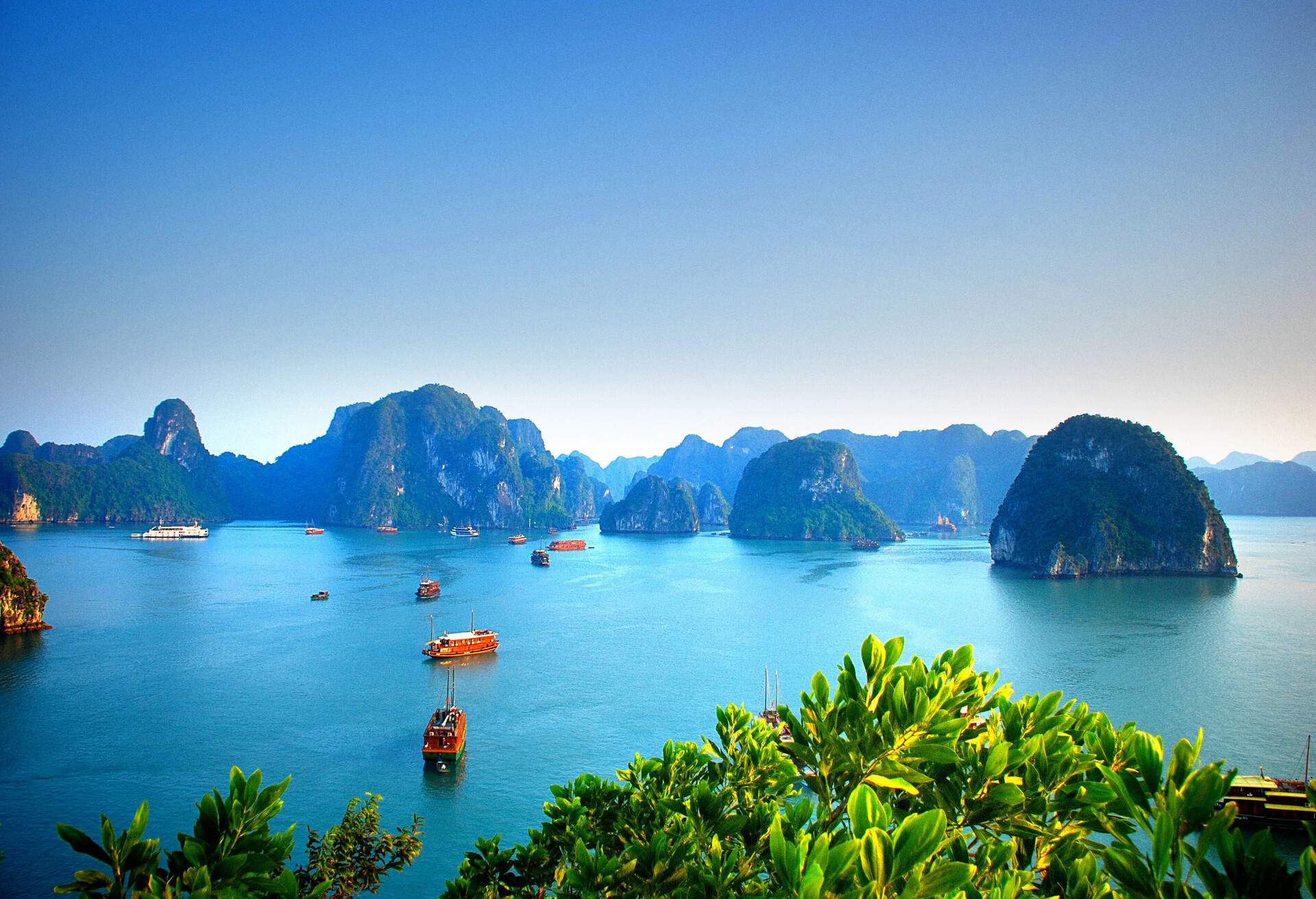
Halong Bay is a UNESCO World Heritage Site, home to emerald-green water and limestone mountains and islands. The region is popular with more adventurous travellers, offering rock climbing, kayaking, hiking, scuba diving, and plenty of fascinating caves to explore. But, for those looking to just sit back and relax, Halong Bay’s stunning beaches are perfect for sunbathing and a quick dip in the ocean. Consider enjoying a cruise or taking in Halong Bay with the luxurious touches of spa services, catering, and cooking classes.
Cat Ba Island
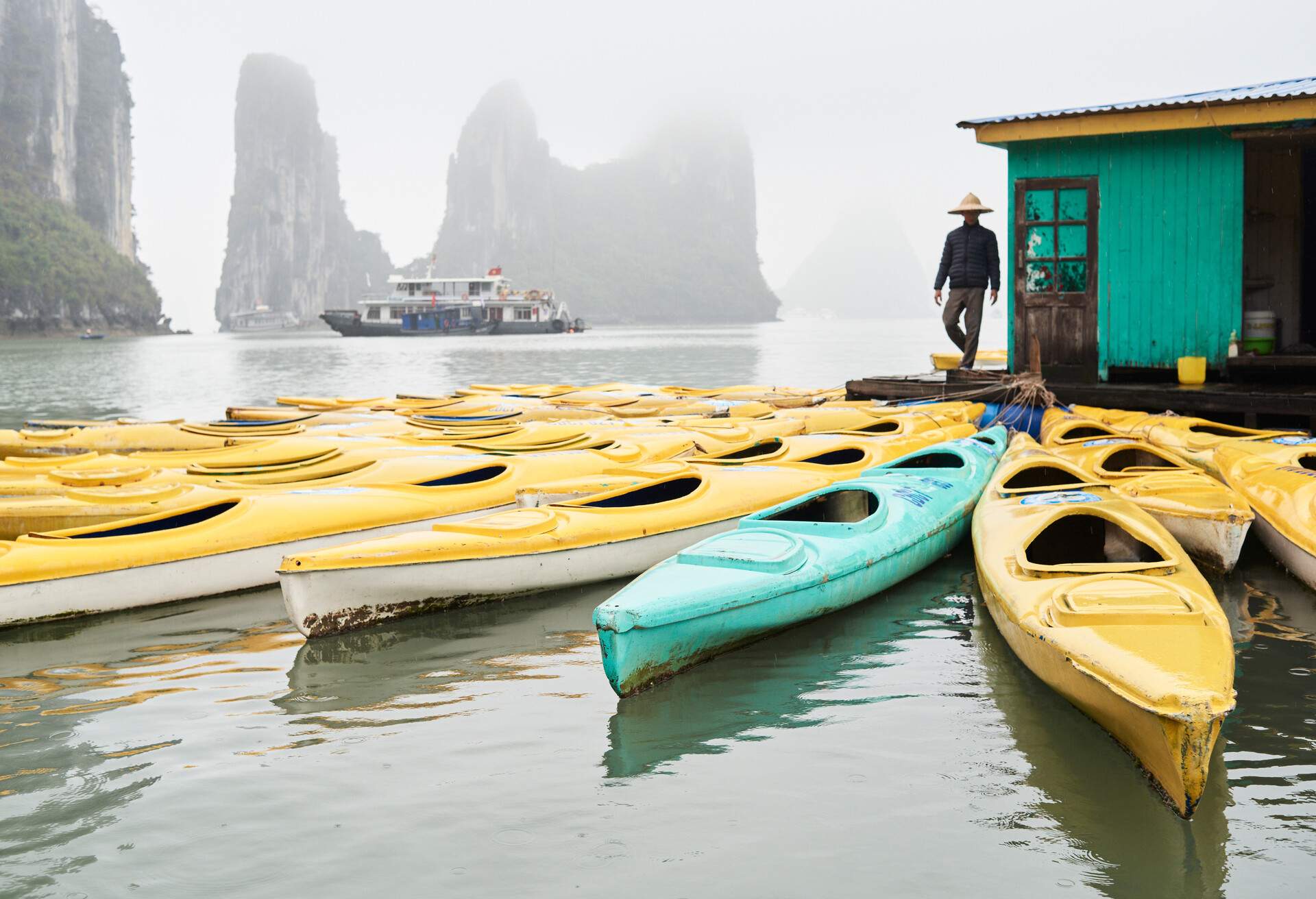
Cat Ba Island is the largest island in Halong Bay; outside of the main residential area of Cat Ba Town, the island is largely untouched and almost half the island is part of a national park, which also includes marine ecosystems in the adjacent water. Head up to Cannon Fort for panoramic views of the island’s landscape and down to Cat Co Cove, where you can relax on the beach or hire out a kayak or jet ski. The Hospital Cave, built in 1963, is a fascinating look into the island’s history and once operated as a secret bomb-proof hospital and safe house, spanning 17 rooms and three stories.
Ba Be National Park
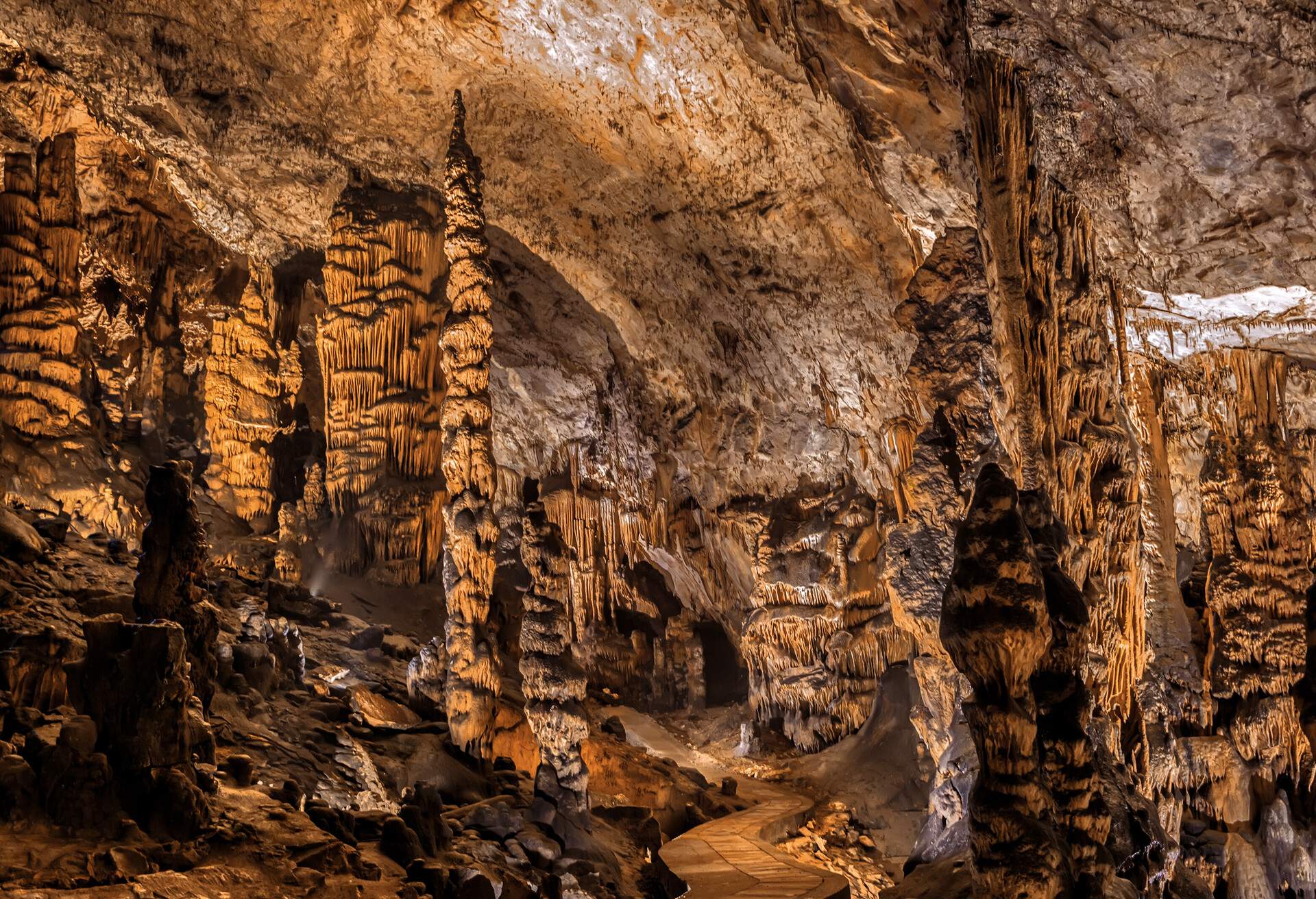
Spanning nearly 100 square kilometres, Ba Be National Park sits in the Bac Kan province and has unique biodiversity, fascinating cave systems and stunning limestone mountains. One of the park’s main features is Ba Be Lake, Vietnam’s largest natural lake; taking a boat across this body of water provides beautiful views of the lake and the limestone cliffs surrounding it. You can also visit the largest waterfall in Vietnam, Ban Gioc Waterfall, a stunning, tiered waterfall that crosses the border between China and Vietnam. You should dedicate at least a full day, if not more, to exploring the park; consider staying with a host family in one of the park’s villages.
Sapa
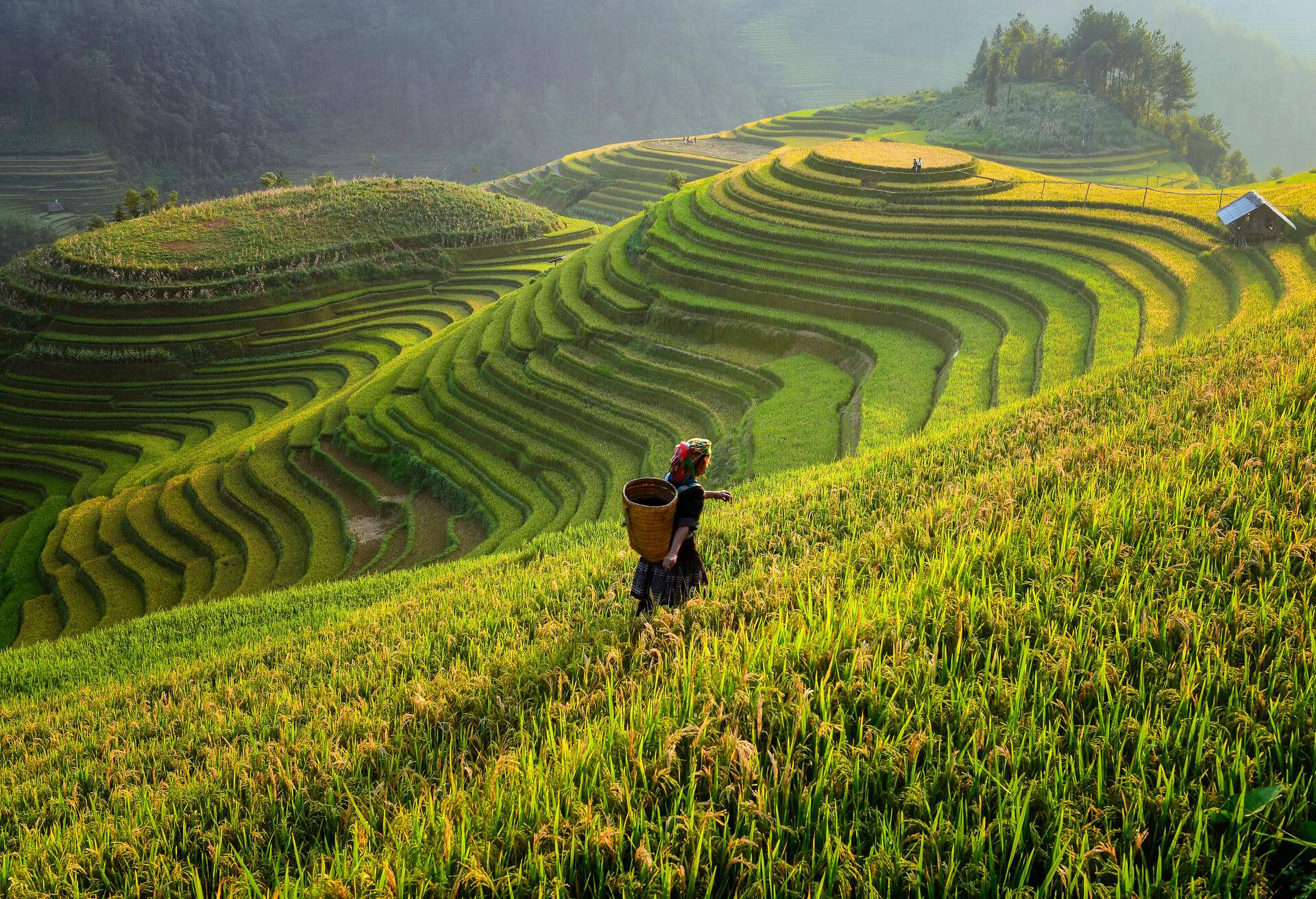
The town of Sapa and its surrounding countryside is a beautiful area with lush green rice fields framed by the Hoang Lien mountains. The area is particularly popular with hikers, and while you can absolutely go on your own self-guided hike, multi-day guided hikes are often a fantastic experience (you’ll likely find your hotel can help you arrange these). While you’re in town, don’t miss out on trying salmon hotpot, a local speciality of sliced fresh salmon, delicious hotpot soup, and locally sourced vegetables. If you want to take in the region’s landscape but don’t want to hike, you can take a cable car to Fansipan Mountain and the funicular to the peak, which provides breathtaking views.
Ha Giang
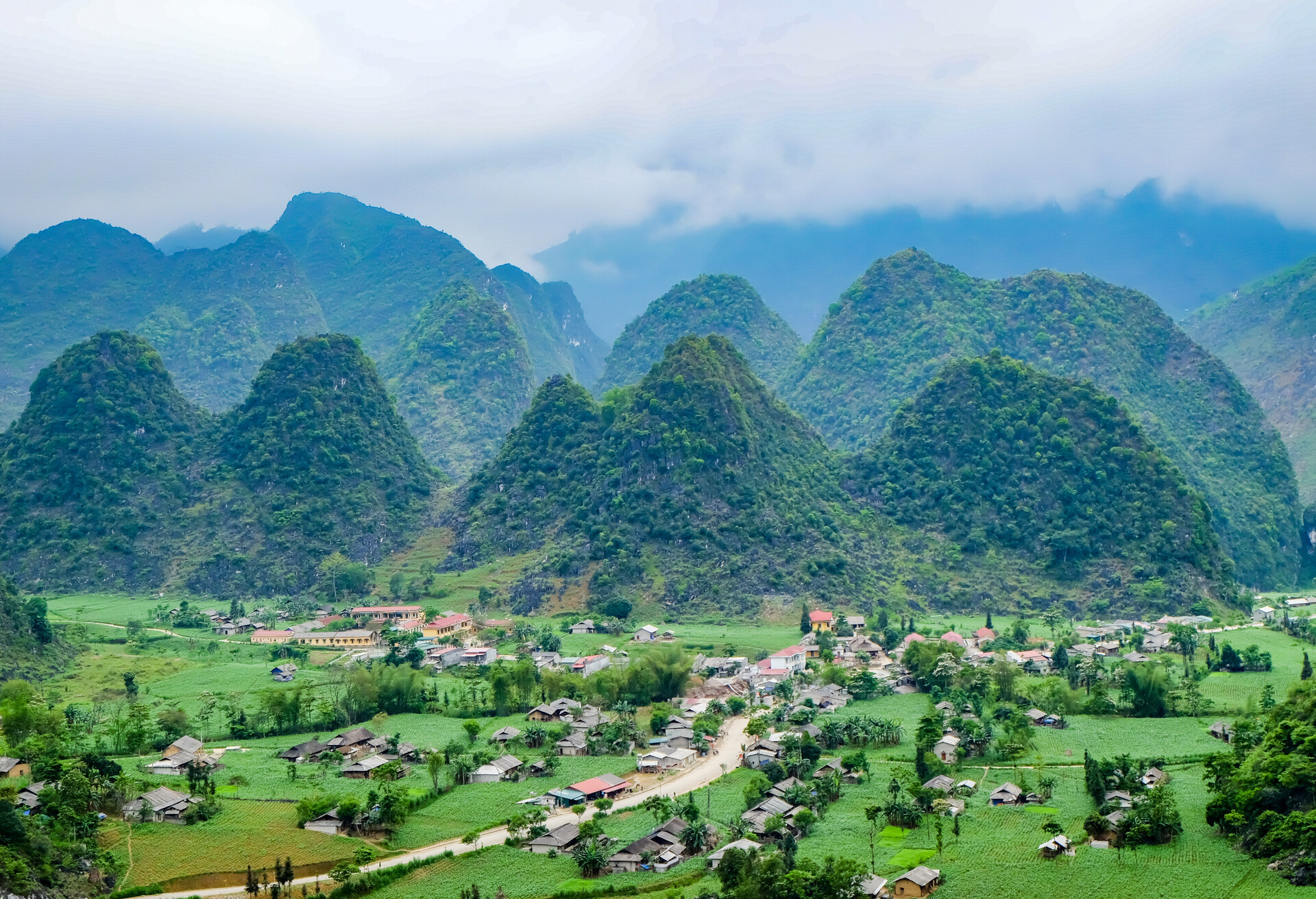
With mountain passes covered in deep green grass, the Ha Giang province is the perfect location in Vietnam for a scenic road trip. The city of Ha Giang operates as the gateway to the province, while one of the best mountain passes, Quan Ba, runs between Ha Giang city and Tam Son, offering incredible views of the plateau. Mai Pi Leng Pass runs between Dong Van and Meo Vac, with mountains and valleys running alongside it.
Best places to visit in Vietnam: Central Vietnam
The heart of Vietnam includes some amazing historical sites, sunny beaches, and breathtaking natural landscapes. Go back to the 15th century as you wander the streets of Hoi An and then go back even further when you explore the abandoned temples of My Son. For even more temples (and a few tombs), a trip to Hue and its surrounding area is a must.
Hoi An
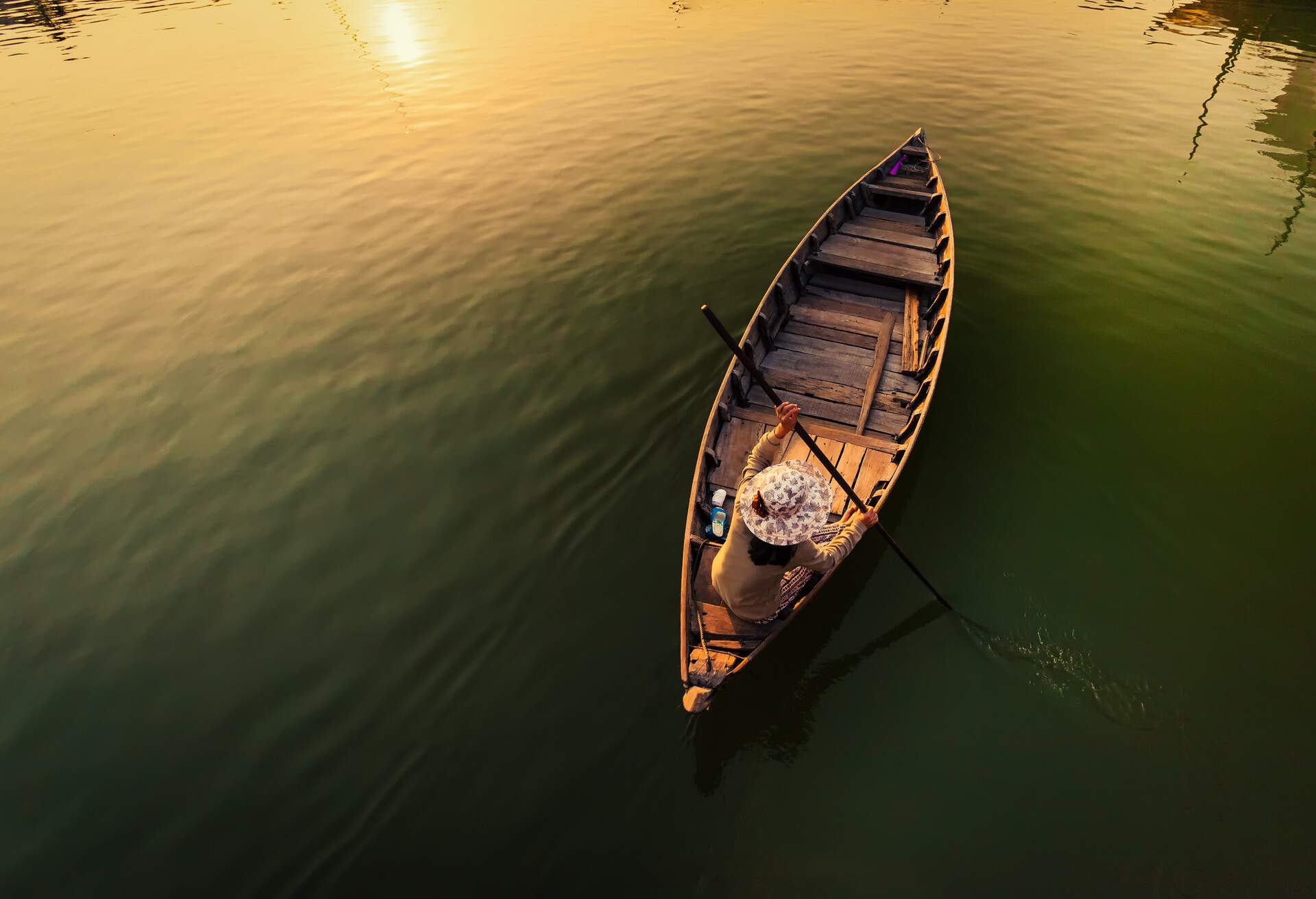
Hoi An is one of the best historic cities in Vietnam, with a remarkably well-preserved ancient town with buildings dating as far back as the 15th century. The ancient town is one of the most fascinating and beautiful attractions in Vietnam, and one of the best ways to take it in is onboard a cruise along the Hoai River. You can then hop off to wander its narrow streets and unique stalls.
At night, Nguyen Hoang Street in the city centre transforms into a night market with over 50 stalls selling food, gifts, jewellery, and clothing. If you can, plan your visit for the 14th day of the lunar month (which could be a few days before or after the 14th on the Gregorian calendar), as this is when the Hoi An lantern festival takes place to celebrate the full moon.
My Son
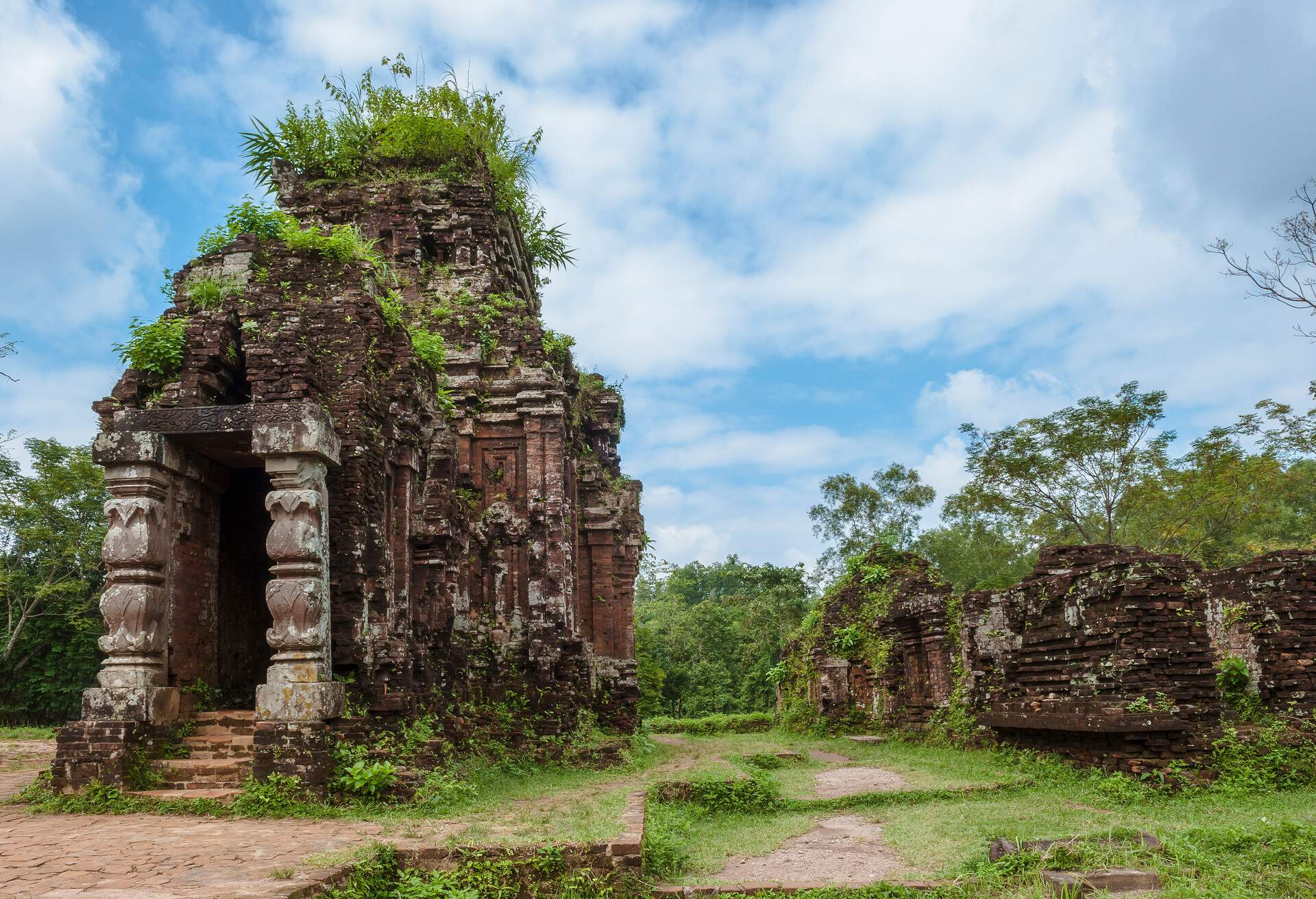
My Son is a complex of abandoned Hindu temples in a lush green valley, built between the 4th and 14th centuries. Built under the rule of the Cham kings, the temples are mostly small structures made from red brick, now interlaced with the flora of the region. Around 70 temples are at least partially intact, and you can still see some of the beautiful, intricate decorations that adorn their walls. Most temples can be entered and you can easily spend a day exploring the area, with a few places to buy food and drink on site.
Da Nang
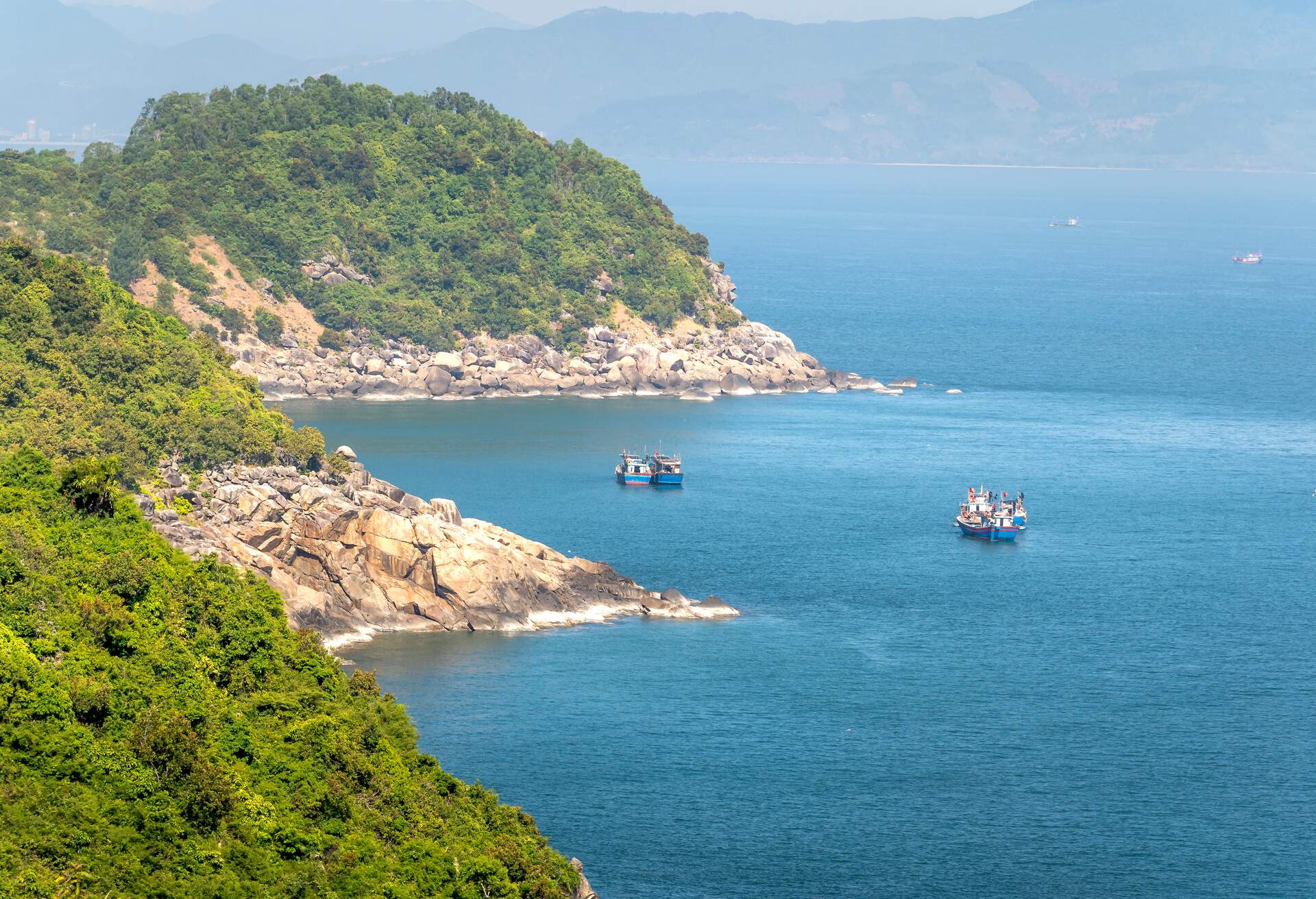
Home to some of the most luxurious resorts in Vietnam, Da Nang has beautiful, broad beaches where you can spend a day snorkelling, sailing or just soaking up the sunshine. Da Nang is only about an hour away from My Son, and if you’ve visited the temples and wanted to learn more about the Cham, you can visit the Cham Museum of Sculpture; it boasts the largest Cham sculpture collection in the world.
You should also consider making an early morning trek up the Marble Mountains, a group of five rock formations; each is topped with a beautiful pagoda, located around 15min from the city. Another excellent place to explore (particularly with a good pair of binoculars) is the Son Tra Peninsula, home to the red-shanked douc langur, a beautiful and endangered species of primate.
Nha Trang
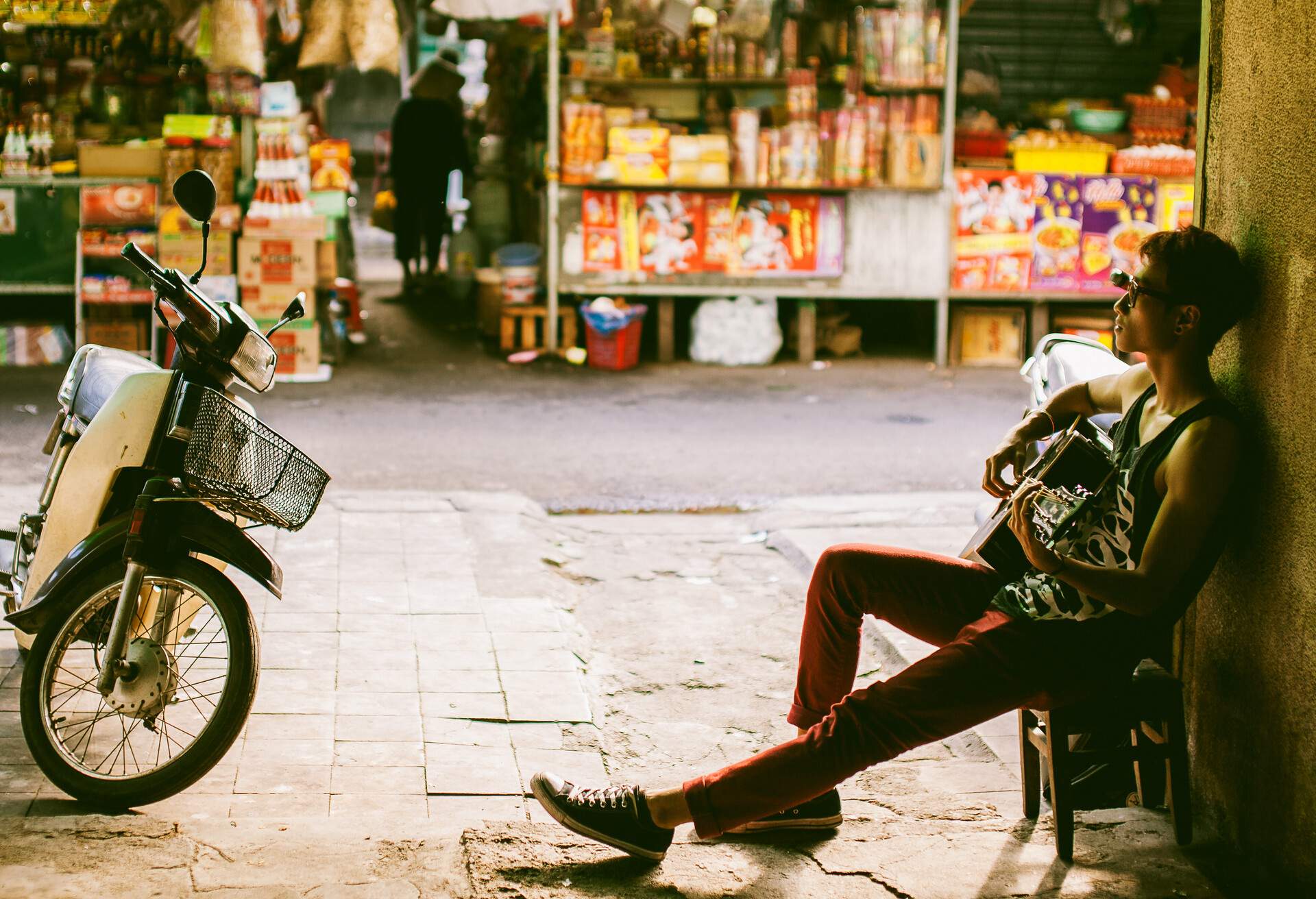
The seaside resort city of Nha Trang is often called the Seafood Capital of Vietnam, and the constant supply of fresh fish means a delicious meal is never far away. Its biggest attractions are its beautiful beaches like the popular Tran Phu Beach or the quieter Long Beach just outside the town. You can amp up the relaxation at one of Nha Trang’s mud baths using the region’s mineral-rich clay, before rinsing off under a waterfall and topping it all off with a soak in a hot mineral bath. Nha Trang also makes an excellent base for day trips, close to Hon Mun Island, a protected marine reserve, and Monkey Island, which lives up to its namesake, so try to plan at least one day away from the city.
Phong Nha-Ke Bang National Park
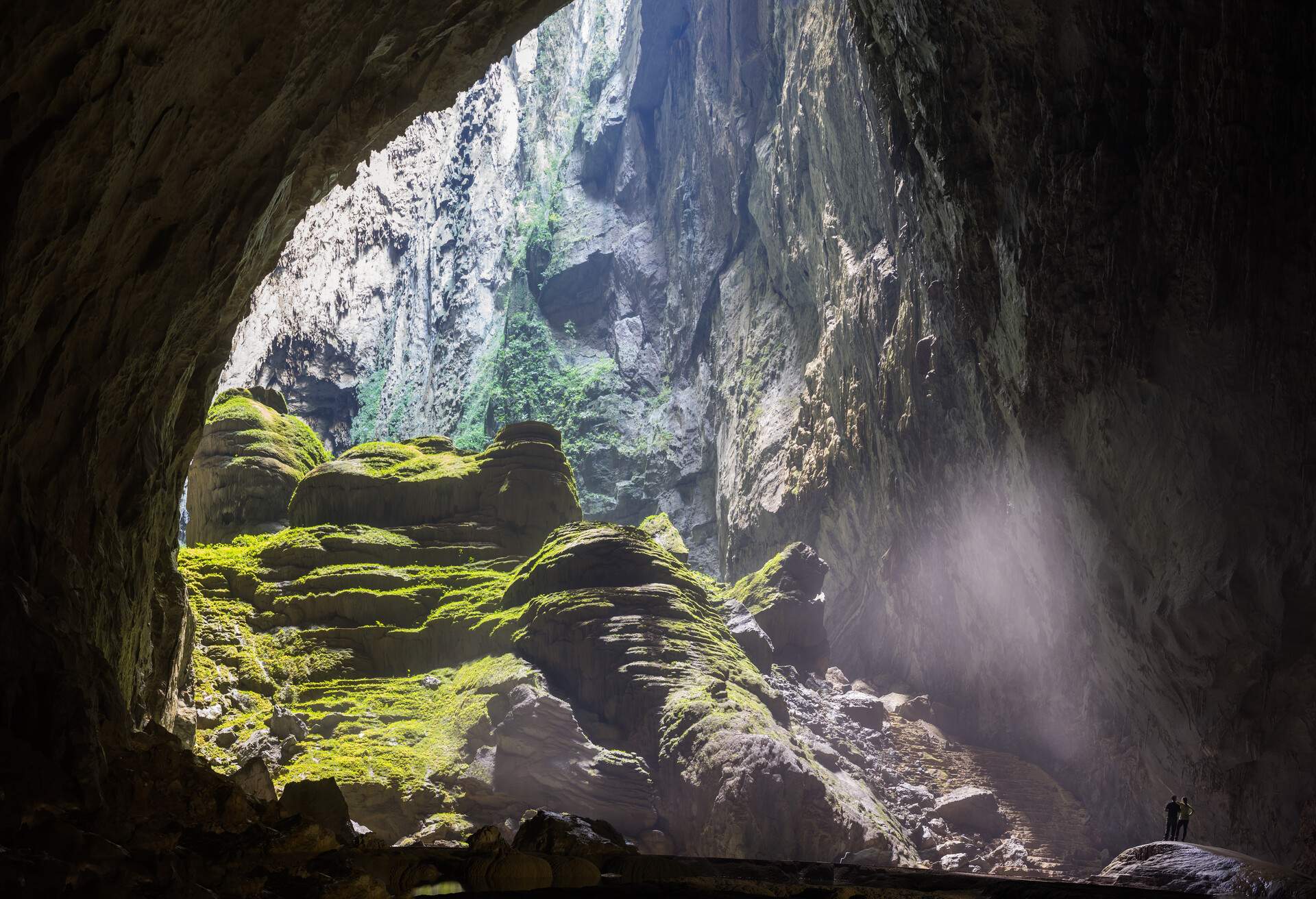
Phong Nha-Ke Bang National Park is a stunning area home to tropical forests, wildlife, and limestone mountains, but it’s probably best known for its large network of fascinating caves. There are at least 300 caves, and joining a cave expedition is an excellent way to explore those such as Hang En and Hang Nuoc Nut. The largest cave is Hang Son Doong, which is also one of the largest natural caves in the world and features a subterranean river. Outside the caves, you can take a hike along the Nuoc Mooc Eco Trail; it’s mostly made up of wooden walkways, so it’s the perfect opportunity to hire a bike and explore.
Hue
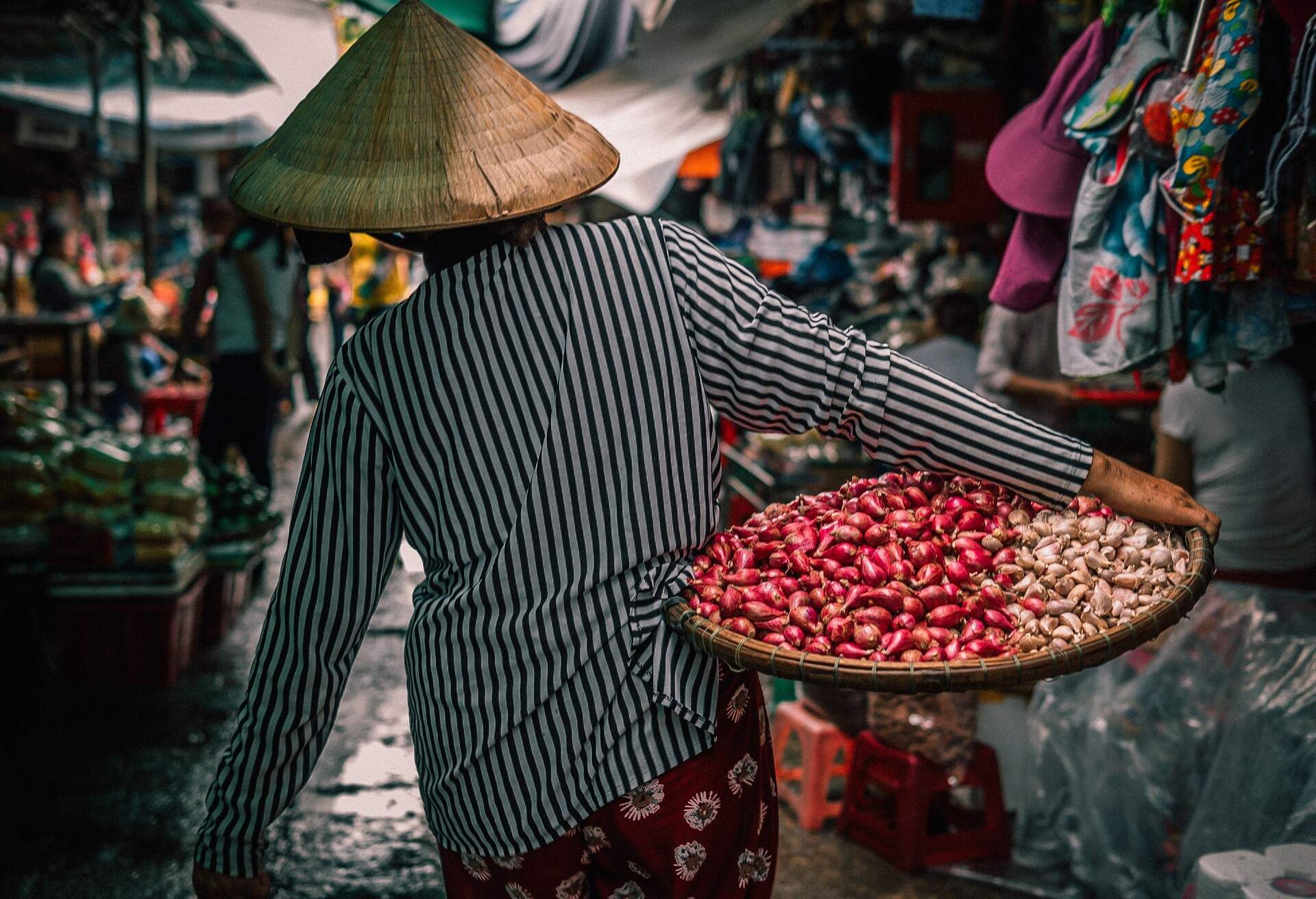
Between 1802 and 1945, Hue was the nation’s capital and seat of the Nguyen Dynasty emperors. One of the city’s biggest attractions is Dai Noi Citadel, a large 19th-century citadel with thick walls and a moat protecting the Imperial City, its museums, temples, and buildings. Hue is also home to several remarkable tombs, such as the Tomb of Tu Duc and the Tomb of Kai Dinh. Around seven kilometres from the city centre, you’ll find the Huyen Tran Princess Temple, at the foot of the Ngu Phong Mountain; it’s a beautiful temple that also sits at the base of the steps to the Hoa Binh Belltower. Hue is a beautiful city with a lot of history, so you should definitely consider taking a tour and learning about the city from a local.
Best places to visit in Vietnam: Southern Vietnam
Southern Vietnam is home to dynamic, bustling cities, gorgeous islands and beaches and amazing markets. City lovers, beach dwellers and adventure seekers can all find amazing places to see in Vietnam down south.
Ho Chi Minh City
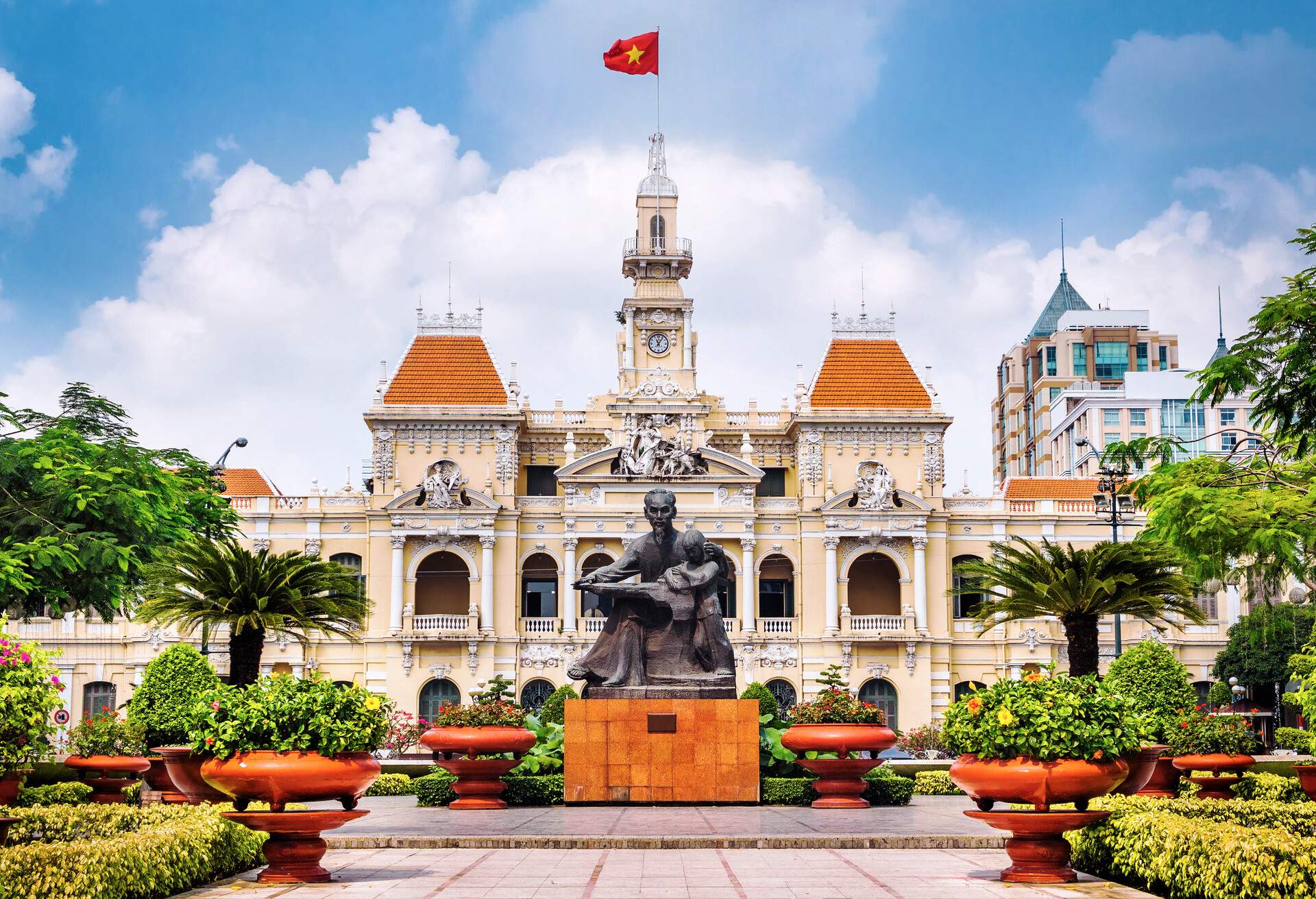
Ho Chi Minh City is busy, bustling and beautiful, with unique boutiques, luxurious hotels and sleek skyscrapers. The city’s fascinating history can be explored at its historical sites and landmarks, like the Cu Chi tunnels and at the War Remnants Museum, which exhibits a vast collection of artefacts, documents, photographs and film from the Vietnam War.
Bui Vien street hosts the city’s most electric nightlife, with bright lights and loud music pumping out onto the street from a wide variety of clubs, and when you’re after food, you can head into some of the smaller side streets to find excellent restaurants (and a break from the noise). You can have some incredible food experiences in Ho Chi Minh City, from the Cafe Apartment to the stalls at Ben Thanh Market to fantastic cooking classes, so you can recreate your favourite Vietnamese dishes at home.
Cu Chi Tunnels

The Cu Chi Tunnels are a vast network of interconnected tunnels under Ho Chi Minh City, just one part of the tunnel system that runs throughout the country used by Vietnamese soldiers during the Vietnam War. Today they operate as a museum, and they’re one of the most fascinating sites to visit in Ho Chi Minh City. You can explore the tunnels’ twisting turns and learn about their inventive booby traps. A guided tour will take about an hour, and it’s well worth joining one, as it will give you a better insight into the facts and stories of the tunnels.
Mui Ne
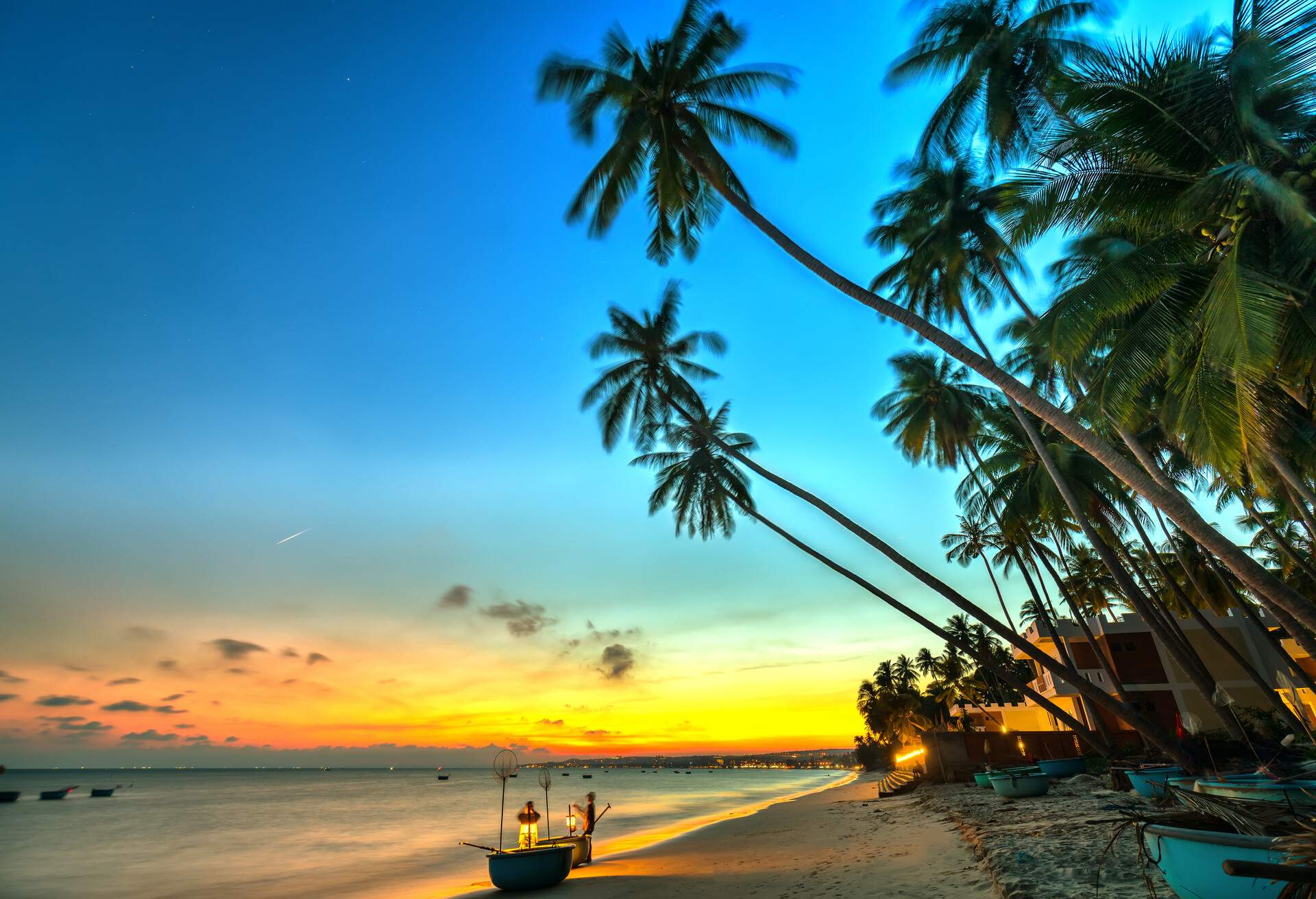
Mui Ne sits alongside the South China Sea and it’s one of Vietnam’s most beautiful beach towns, with long stretches of sand and bright blue waters. Head to the Mui Ne fishing village early in the morning for fresh fish, scallops, and crabs or just to revel in the bustling atmosphere of the stalls and the harbour.
Mui Ne Beach frequently finds itself on lists of the best beaches in the Asia Pacific region and boasts a wide variety of activities like kitesurfing, sailing, scuba diving and snorkelling. If you prefer inland adventures, head to Ta Cu Mountain for a hike flush with bright flora, leafy trees and stunning views.
Phu Quoc
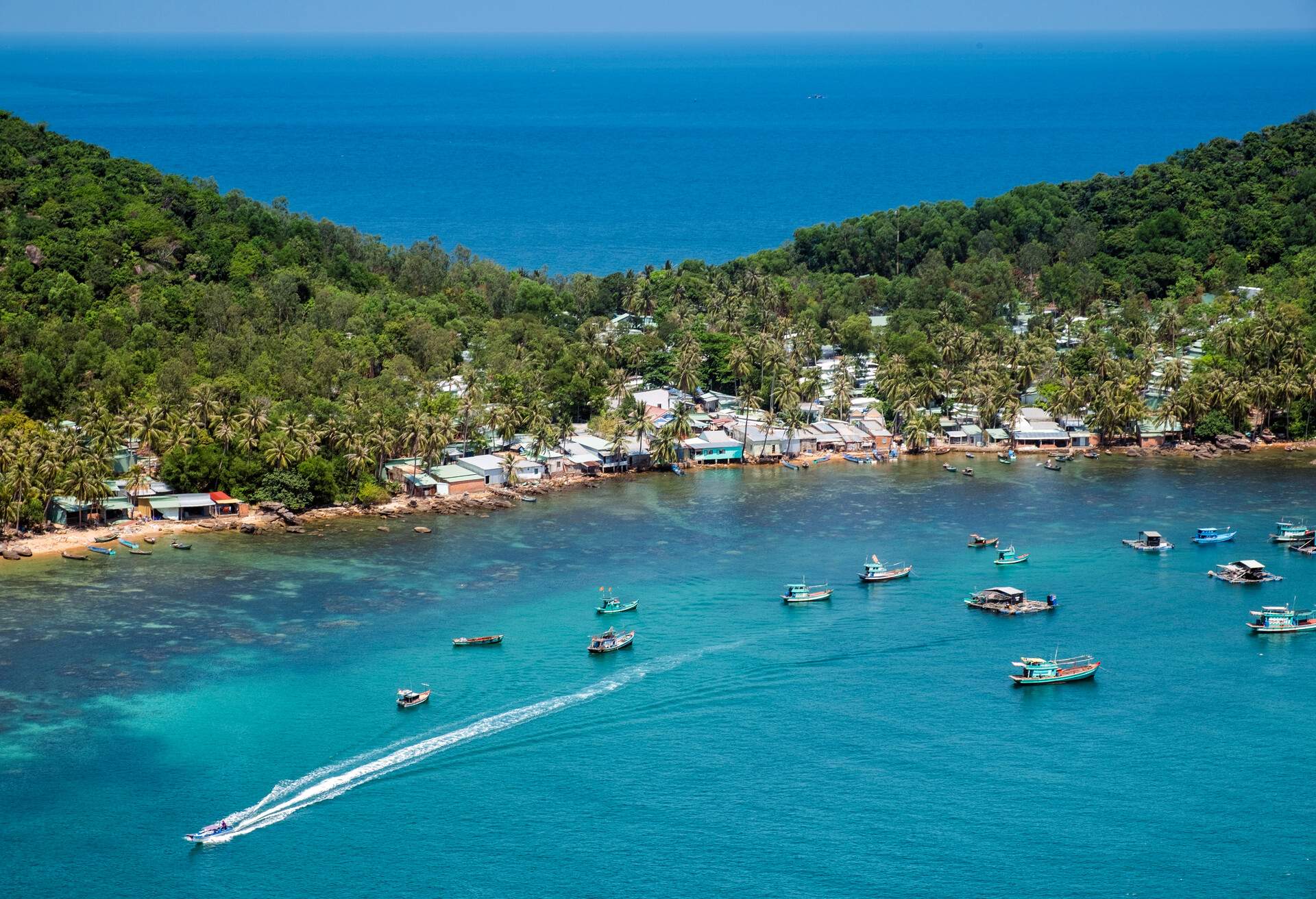
Phu Quoc is an island in the Gulf of Thailand, well known for its gorgeous sandy beaches and luxurious resorts along its coast. Phu Quoc National Park, a UNESCO Biosphere Reserve, encompasses most of the island, protecting tropical jungle ecosystems, stunning mountains and diverse wildlife. This part of the island is perfect for hiking, camping and bird spotting. The main town on the island is Duong Dong, where you’ll find both day and night markets, a beautiful temple, and multiple establishments selling the town’s local fish sauces (you can often watch the production process before buying).
Con Dao Islands
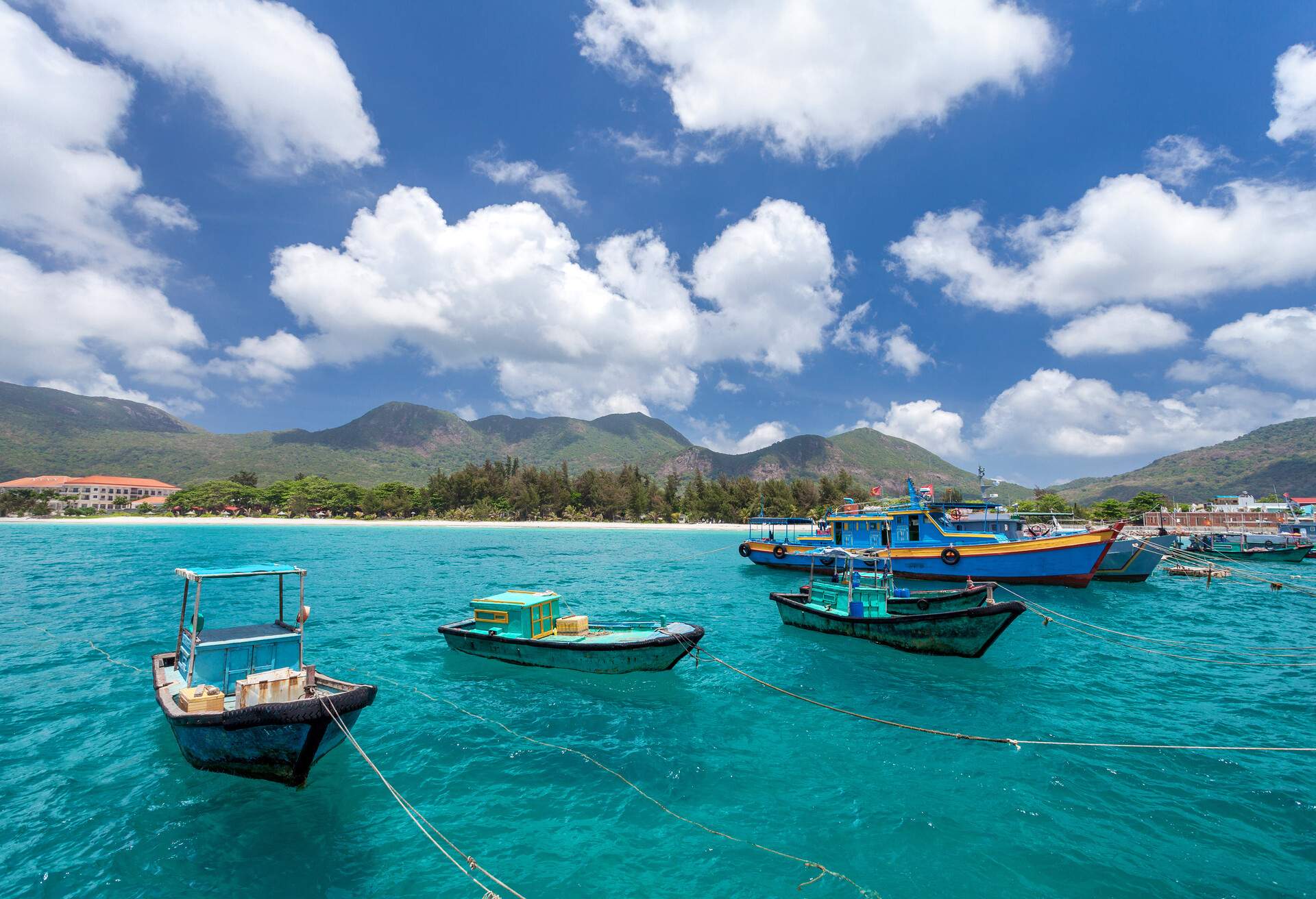
The Con Dao Islands are a group of islands off the southeast coast of Vietnam and are home to some stunning coral reefs and marine ecosystems, perfect for snorkelling and scuba diving. You can reach the islands from the mainland by ferries from the port of Vung Tau, which run three to four times a week; however, this takes around 12 hours and the waters don’t tend to be smooth, so it’s usually better to fly, with flights available from Ho Chi Minh City and Can Tho. Today, the Con Dao Islands are an idyllic retreat, but they have a brutal history. They were once home to prisons used by the French and Americans to imprison anti-regime activists, and you can still visit the jails and learn about their history at Con Dao Museum.
